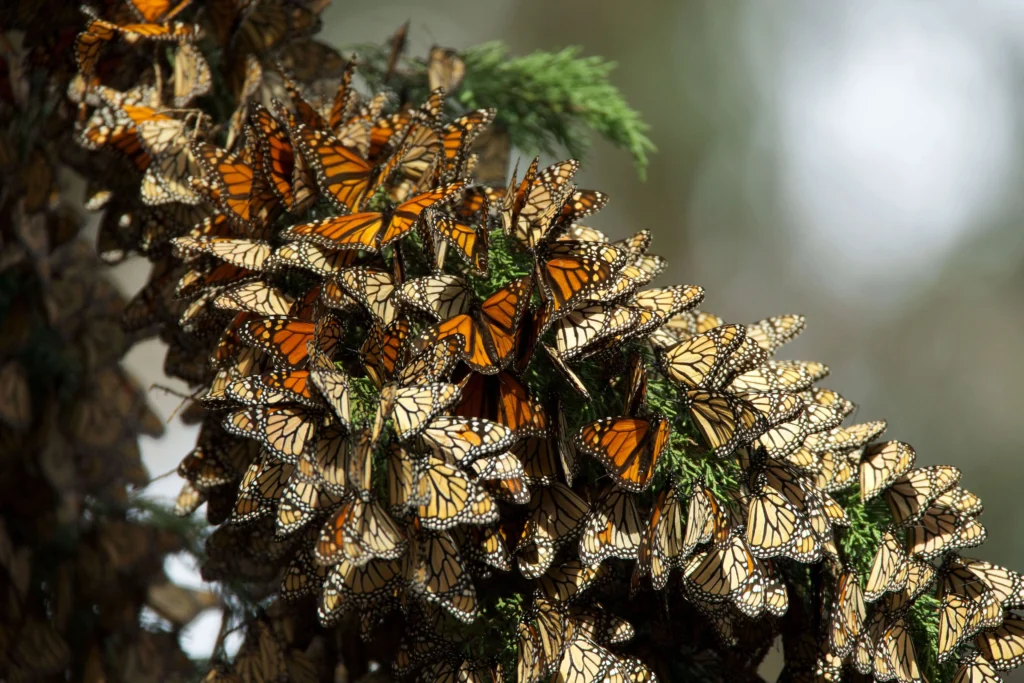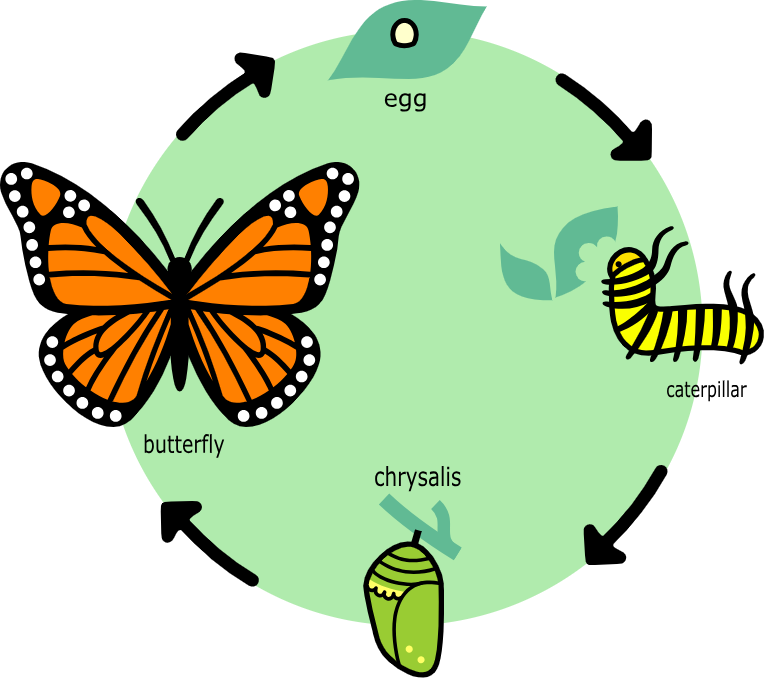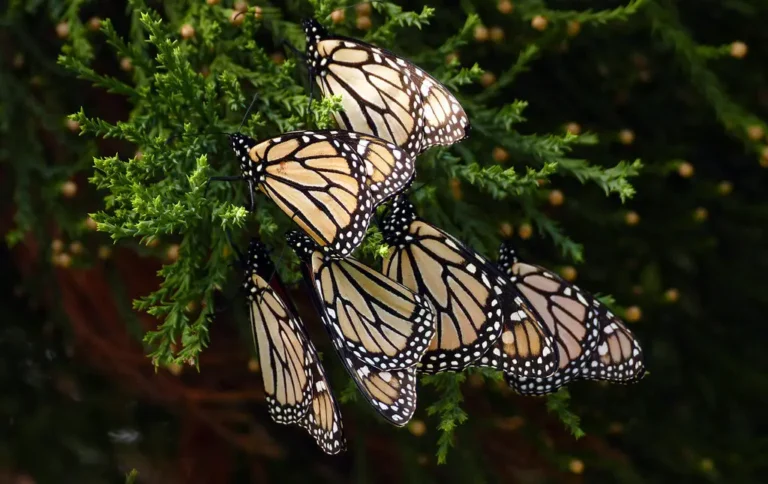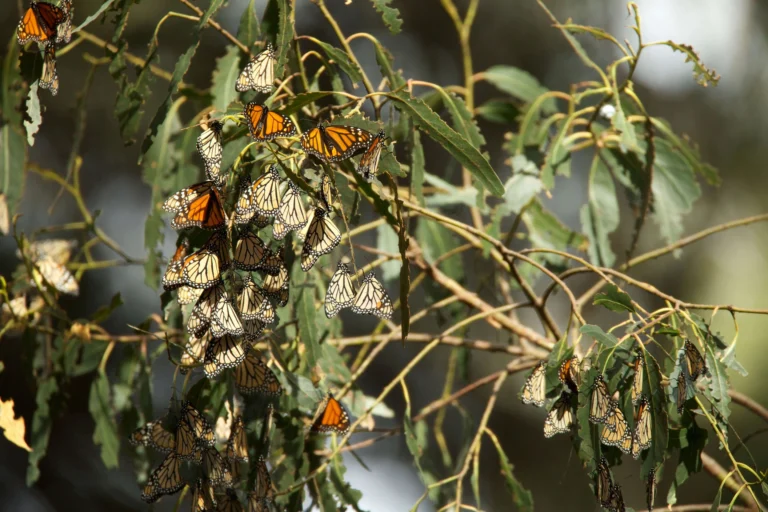When Do Monarch Butterflies Migrate? Key Patterns & Spots
Quick Summary: When Do Monarch Butterflies Migrate? Monarch butterflies migrate when seasons change. In fall, around September, they leave colder areas for warm spots like Mexico and California. By November, they rest in these warm places. Come spring, around March, they start their journey back north, reaching places like Ontario, Arizona, and North Carolina by April and May. Weather can change their travel times.

Table of Contents
Introduction: The Marvelous Migration of Monarch Butterflies

Monarch butterflies are amazing travelers. Every year, these small and delicate creatures go on a big journey, as highlighted in our complete guide on monarch butterfly migration. They know when it’s the right time to leave for warmer places because of the cold.
Kids and adults alike look up to the sky and think, “Is it time for the monarchs to fly away?”
This article will tell you when monarch butterflies start their special trip.
The Lifecycle of Monarchs and the Role of Seasons

Monarchs’ migration is tied to their lifecycle and the changing seasons. They start as eggs, become caterpillars, then form a chrysalis before emerging as butterflies. The lifecycle stages, especially the fascinating monarch butterfly chrysalis stage, play a significant role in determining their migratory patterns.
When they are butterflies, the seasons begin to matter a lot to them. When days become shorter and colder, monarchs know it’s time to get ready to leave. Cold weather isn’t good for them, so they need to go to a place that’s warm during the cold winter months.
But when spring comes back and the days get warm and long, the butterflies know it’s time to fly back to where they were before.
So, if you think about their lifecycle and how seasons change, you’ll know when these butterflies decide to travel.
Fall Migration: Heading to Warm Lands

When Do Monarch Butterflies Migrate?
When summer starts to end and fall comes around, usually in September, monarchs get ready for their big trip. The exact day they leave might change a bit each year, but it’s always around this time. They’re getting ready to go south where it’s warm.
Texas: A Key Spot in October
Texas in October witnesses a surge of migrating monarchs, making it a pivotal point during their migration. Our article on why monarch butterflies migrate sheds light on the reasons behind this magnificent journey.
By the time late October and early November come, something magical happens. If you go to the forests in Mexico, you’ll see a special sight. Trees covered with butterflies! They have finished their journey and will stay here until spring calls them back home.
Winter’s Break: Where Monarchs Rest

Resting in Mexico’s Forests
After their long trip, monarchs find a cozy spot in Mexico’s forests, usually in November. These forests give them just the right feel – not too cold, not too hot. They stay here for a few months, resting and waiting for the next part of their journey.
California’s Special Spots
But not all monarchs go to Mexico. Some prefer another place. They chose the coast of California. Areas like Pismo Beach and Santa Cruz become their winter homes. If you visit these places in late October and November, you’ll find many monarchs. They stay here, protected from the cold, until it’s time to move again in spring.
Spring’s Signal: The Return Trip North

Early Signs of Spring
When winter starts to end and you feel the first warm days of spring, usually around March, the monarchs begin to move again. They’ve had their rest, and now they’re ready for the journey back to where they started.
The Trip Back Home
From March to May, these butterflies leave their resting places in Mexico and California. They fly in big groups, going back up north. On their way, they find partners and lay eggs. This makes sure there will be new butterflies to continue the cycle next year.
Some places, like Arizona, North Carolina, and Ohio, see these returning butterflies early, in April. As May comes around, even more monarchs pass through. These places are like rest stops for the butterflies, offering them food and a break as they keep moving.
Factors That Influence When and Where Monarchs Migrate

The monarchs’ migratory timing can be influenced by weather variations. Their migration schedule adapts to the changing climate of different regions.
These adaptabilities are intrinsically linked to their survival, as some monarchs are known to carry toxins, making them unsuitable for consumption. Learn more about the toxic nature of some monarch butterflies.
How Climate Makes a Difference
The timing of the monarch’s journey isn’t always the same. One big reason for this is the weather. If fall is warmer than usual, the butterflies might leave a bit later. On the other hand, if spring gets warm early, they might start their trip back north sooner.
Different Places, Different Timings
Climate isn’t the same everywhere. A place like Michigan might still feel cold in the early spring, so the butterflies come back there later. But places like Oklahoma might get warm faster, making the monarchs return sooner. Where you are can change when you see the butterflies.
Important Rest Stops Along the Way
States like Arizona and Ohio aren’t just random places for monarchs. They have just the right weather and food for the butterflies. If these states have plenty of food and nice weather, the monarchs might decide to stay a bit and rest before they continue their journey.
A Look into the Past & Present of Monarch Migration Timings

Patterns from the Old Days
For a long time, people have watched and noted down when and where monarch butterflies travel. In the past, these butterflies were like clockwork. They came and left places at almost the same time every year.
Noticing Some Changes
But recently, some things have changed. The butterflies still make their trips, but sometimes they start a bit earlier or later than before. Many think that changes in the world’s weather and places where the butterflies live are reasons for these shifts.
Different Places, Different Stories
Places like Ontario in Canada have their own butterfly stories. Some people in Ontario have seen monarchs leave a bit later in the fall than before. But other places near Canada have noticed the butterflies coming back earlier in the spring. It’s important to keep an eye on these changes.
By understanding them, we can help keep the butterflies safe and make sure they keep making their amazing trips.
Spotlight on Key Stops During Monarch Migration
Ontario: More Than Just a Starting Point
For monarchs, Ontario isn’t just another place on their map. It holds a special role. When the weather begins to shift, monarchs start their journey from places like Ontario, moving to warmer spots.
Essential Waypoints: Arizona, North Carolina, and Beyond
On their way back north, there are places that become super important for monarchs. States like Arizona welcome the butterflies early, around April. North Carolina, Ohio, and Nebraska also become bustling with activity. These areas offer food and rest, helping the butterflies recharge and continue on.
California’s Special Winter Spot
Mexico gets a lot of attention as a winter home for monarchs, but California has its special spots too. Come October and November, places like Pismo Beach and Santa Cruz become filled with monarchs. These areas give them the perfect weather to rest during the chilly months.
Conclusion
The travel story of monarch butterflies is truly a wonder. They go from Mexico’s forests to California’s coastlines and even reach Canada, covering thousands of miles with great determination.
While many things can change their travel plans a bit, like the weather or food availability, one thing remains the same: their incredible drive and adaptability.
Knowing when and where monarchs migrate isn’t just about being amazed by their journey. It’s about making sure this natural event can be seen by our children and their children too.
By focusing on key places like Ontario and California and watching their patterns, we can help these wonderful butterflies continue their age-old journey.





